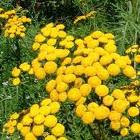Guinea hen weed is a member of the pokeweed, Phytolacceae family of plants native to the Amazon rainforest, Central and South America , the Caribbean , parts of Africa , Florida Texas USA
In the South American continent it is used both for medicine and magic by shaman of indigenous Indian tribes. Its roots particularly have a strong garlicky odour, which is why, presumably it shares the Latin name for garlic, allium. Perhaps because of this smell it is used, as is garlic to ward off evil and witches. Shamans use it for magic too, so it is a highly regarded herb. The root, which smells more strongly than the leaves, is believed to be the most potent part of the plant in traditional medicine systems.
In Cuba Guatemala Peru
 In
In A leaf decoction is used for digestive tract problems such as flatulence and the plant which has so many uses, including as an abortifacient, an analgesic to relieve labour pains, to support the immune system, for lung and respiratory problems and even, it is rumoured, as an aphrodisiac.
The plant can grow to around a metre high, and has dark green leathery leaves which are close to the ground; the mall white flowers grow on a tall spiky stem and all the plant smells of garlic which is why it also has the name garlic weed. It is also known as tipi, pipi, mucara and a host of other names.
Because of its uses in traditional medicine it has come to the attention of scientists, who have endeavoured to prove its efficacy for the treatment of cancer and diabetes. However the results have so far been inconclusive, with the best results only in in vitro experiments. It has been shown to have analgesic (mild pain-killing) effects, and to have antimicrobial, antifungal and antiviral properties. One article “A fraction from Petivera alliacea induces apoptosis via mitochondria-dependent pathway and regulates HSP70 expression” (Universitas Scientarum Vol.14 (2-3) May-Dec 2009, pp 125-134, Maria Claudia Cifuentes et al. Pontificio Universidad Javieriana, Colombia) found that it has anticancer properties and can inhibit the growth of cancerous cells and kill them. Other studies have also indicated these properties, but they have been limited.
A screening of 1,400 plants undertaken at the University of Illinois
Extracts of the plant have also shown anti-inflammatory actions, but there is still some speculation regarding which chemicals in the plant are responsible for all its actions. Research is ongoing and hopefully it will provide some new treatments for the diseases we suffer from.




































